What Is a Pediatric Hospital Bed?
From my experience, a pediatric hospital bed is a medical bed made just for children and teens in a hospital setting. These beds are smaller than the standard ones for adults. This size makes them a good fit for young patients of various ages.
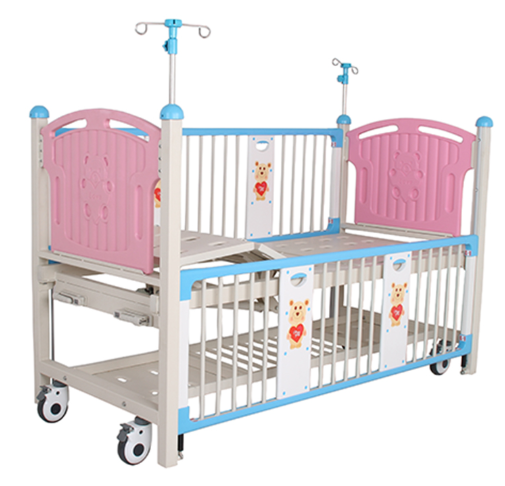
I find these key features and benefits very important:
The side rails are designed for safety and have adjustable heights.
I like that the headboards and footboards are powder-coated. This makes them durable and easy to clean.
Secure braking systems prevent the bed from moving unexpectedly.
You can adjust the HI-LOW rail heights. I rec ommend this for children at different stages of growth.
They come with mattresses, I.V. poles, and other optional accessories. This helps support different medical needs during a hospital stay.
I believe pediatric hospital beds are essential. They keep young patients safe and comfortable while they receive care. These beds consider a child’s physical and emotional needs. This helps improve their recovery and the whole treatment experience.
Key Features of Pediatric Hospital Beds
In the design of children’s hospital beds, I believe safety and comfort are the most important things. These beds have special features made for the specific needs of infants, children, and teenagers.
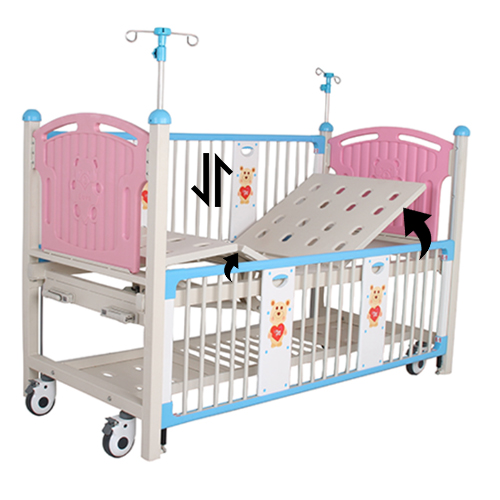
Adjustable Side Rails
From my experience, high guardrails are a standard feature. They create a barrier to prevent children from falling out of bed by accident.
Many beds have side rails you can set at three different heights, from 56 cm up to 119 cm.
This flexibility keeps restless children secure. It also gives caregivers easy access when needed.
Adjustable Head and Foot Sections
You can raise or lower the head and foot sections of the bed separately.
The common adjustment for the backrest is 0°–75°, and for the footrest, it is 0°–40°.
I find this feature helps keep the child comfortable. It also supports treatment and makes examinations easier.
Mobility and Emergency Access
Central brake systems and 360° swivel wheels make the bed easy to move. The locks make it stable when stationary.
The head and foot boards are removable. This allows for a fast response in an emergency. It helps caregivers perform procedures and transfer patients with less risk.
Pediatric Comfort and Support
I recommend beds that come with padding or special mattresses, like foam or visco. They relieve pressure and provide comfort during long hospital stays.
The surfaces are designed to support a wide age and size range, from small infants to adolescents.
Helpful and Functional Accessories
Multiple IV pole slots, often up to four, are useful for infusion pumps and giving medication.
Mechanical CPR features allow for immediate and clear access for resuscitation.
You can get other options like utility shelves, drainage hooks, and urine bag holders. I also suggest protective bumpers to improve safety.
The standard weight capacity is about 120 kg (265 lbs). Length options are from 1300 to 1880 mm, and widths are from 650 to 900 mm.
Safety and Certification
In my opinion, you should always check for certifications. Many beds have CE and ISO marks, which show they meet strict healthcare and safety rules.
Specialist and Optional Features
You can get ICU versions that have full enclosure systems or advanced ways to monitor the patient.
Transport models are built for better stability and are easier to move within the hospital.
I suggest looking at some optional upgrades. Under-bed lighting is great for night care. A battery backup ensures electric adjustments always work. Extendable bed lengths fit taller patients. A self-help pole helps the patient move on their own.
Based on my experience, these key features are vital. They help make pediatric hospital beds safe, adaptable, and comfortable for young patients.
Types of Pediatric Hospital Beds
There are many types of pediatric hospital beds. From my experience, each one is made for a child’s specific age and health needs.
Standard Pediatric Hospital Beds
You can adjust the height of these children hospital beds. They have side rails. This helps caregivers reach the child and move them safely.
I find that many have fun, welcoming designs. This helps kids and teens feel more comfortable and safe during their hospital stay.
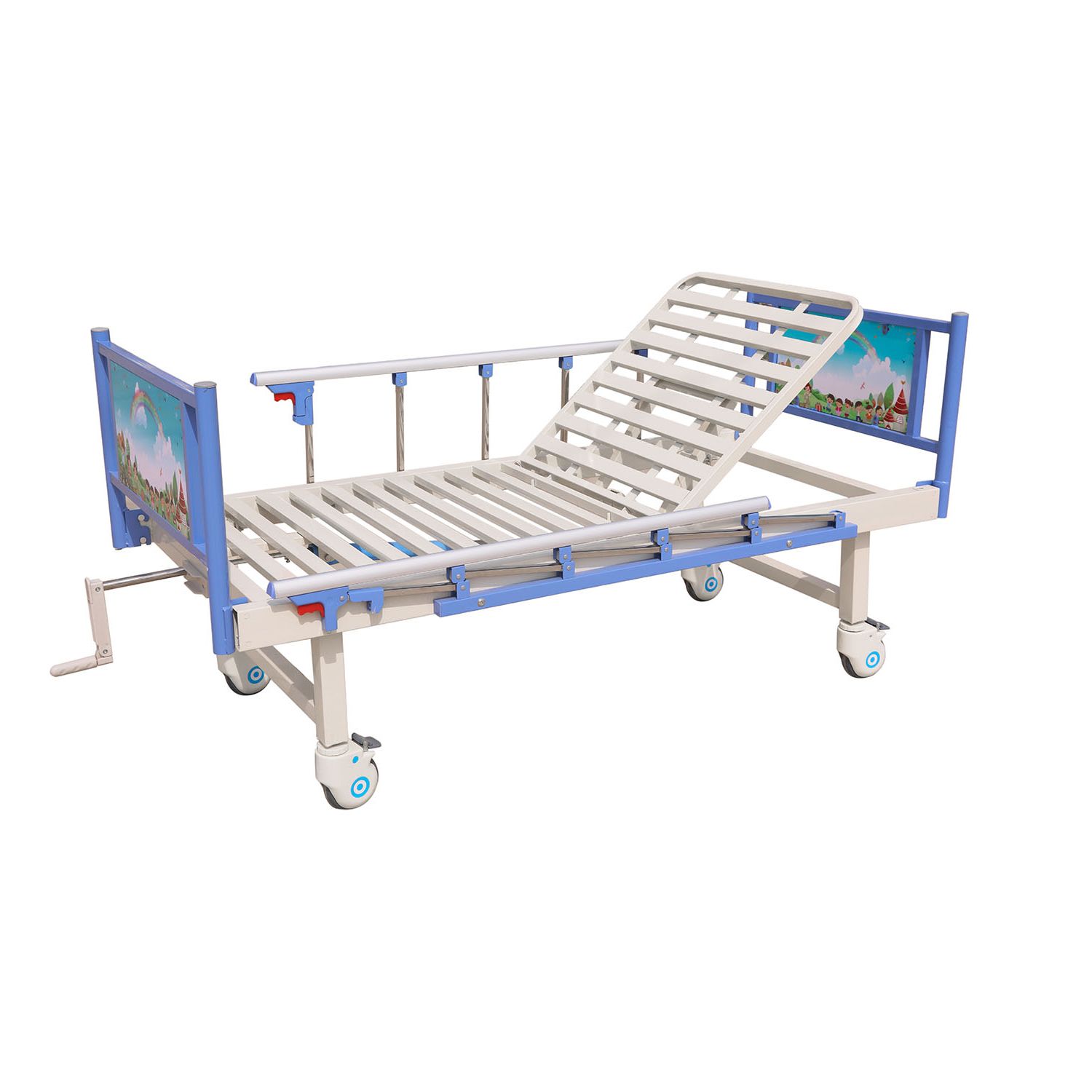
Pediatric Cribs (Crib-Style Pediatric Beds)
These are made just for infants and toddlers. They have high rails, between 30 to 38.5 inches (760 to 1000 mm).
The sleep area is small, about 31.5 inches long (800 mm) and 19.7 inches wide (500 mm).
The enclosed design is great. It stops little kids from falling out and keeps them secure.
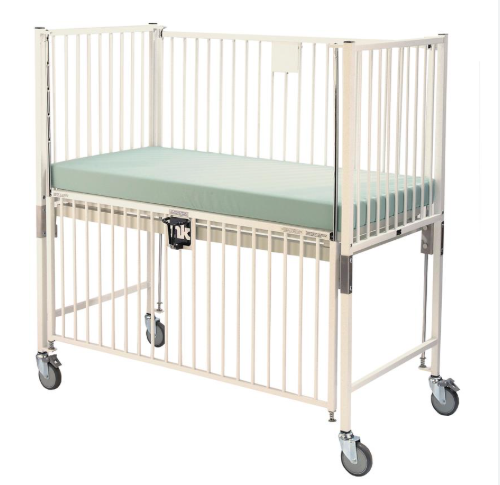
Newborn Hospital Bassinet
A Newborn Hospital Bassinet is a medical-grade, mobile hospital baby crib used in maternity wards and nurseries for the safe care, observation, and transport of healthy newborns (0–28 days).
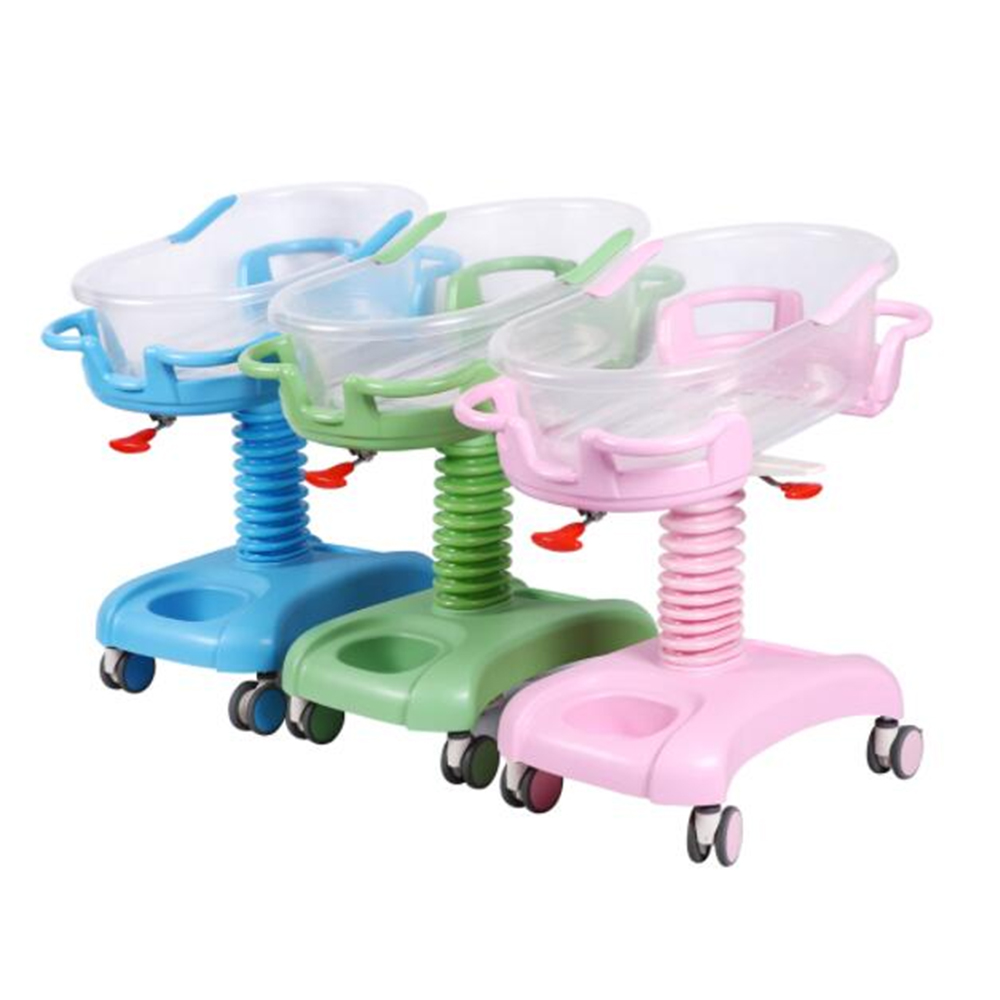
Key Features:
Medical-Grade Design: Hygienic, durable materials compliant with hospital safety standards.
Mobility: Locking medical wheels for easy transport beside mothers or between hospital areas.
Open Visibility: Low, clear acrylic walls for unobstructed monitoring of the infant.
Safe Sleep Surface: Firm, flat mattress to reduce SIDS risk (AAP-compliant).
Basic Medical Support: Holds oxygen hoods, vital sign probes, IV poles, or warming units.
Purpose:
Provides a secure, accessible environment for routine newborn care, bonding, feeding, and short-term hospitalization.
PICU (Pediatric Intensive Care Unit) Beds
When a child needs critical care, we use these beds. They have advanced electronic controls and extra monitors.
In my opinion, their high level of adjustability is key. They provide great support for patients in serious medical situations.
They can be up to 84 inches long (about 2130 mm) and 38 inches wide (970 mm).
Transportable Pediatric Beds
I recommend these beds for moving kids safely around the hospital. They are stable and protective, which makes it easy to transfer a child for a procedure or observation.
You will often see these in emergency rooms and operating areas.
Exam Beds and Specialty Solutions
Doctors use these beds for exams and clinical procedures. They are stable and easy to adjust. This helps position the child correctly for treatment or tests.
The right pediatric bed can transform a child’s hospital experience. The careful design, safety features, and comfort elements truly matter when young lives are in our care. Every child deserves to feel secure and supported during their recovery journey. These specialized beds represent more than just medical equipment – they’re a foundation of hope and healing for our youngest patients.
